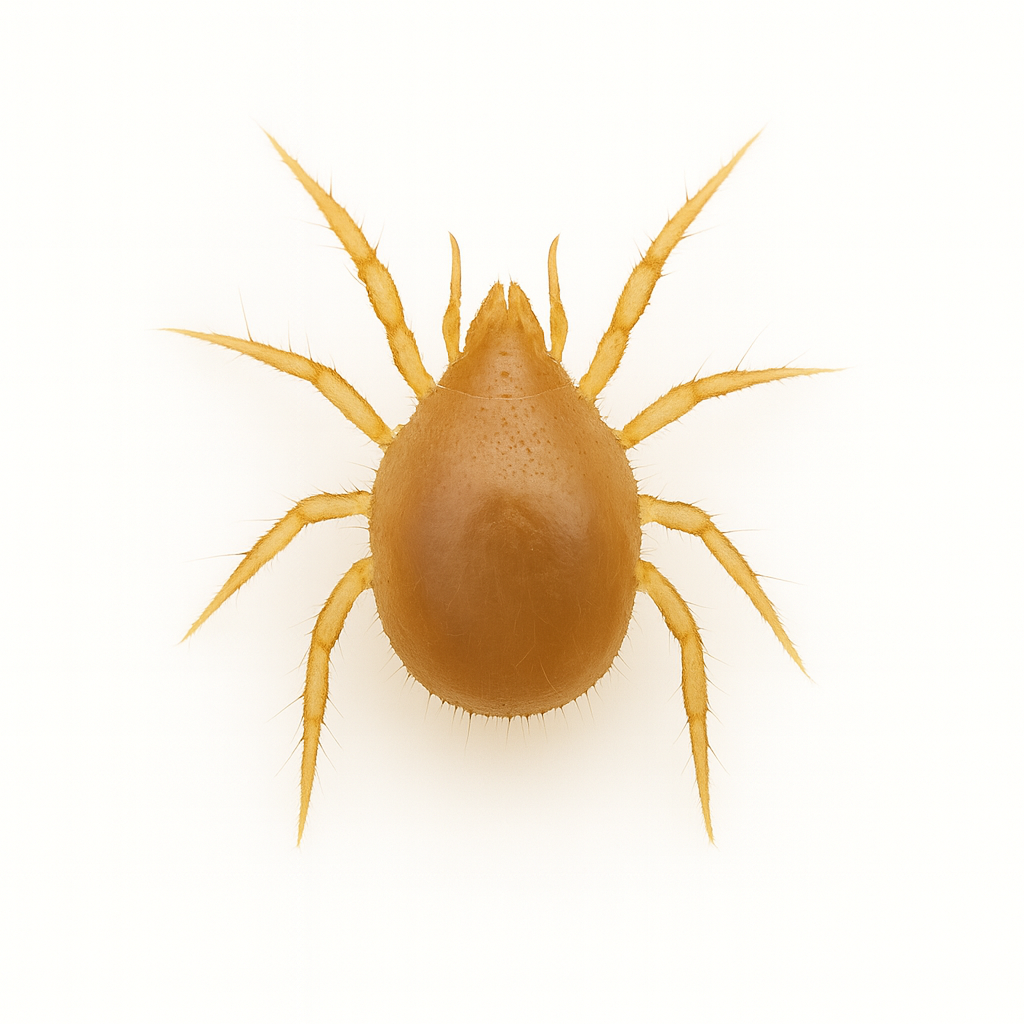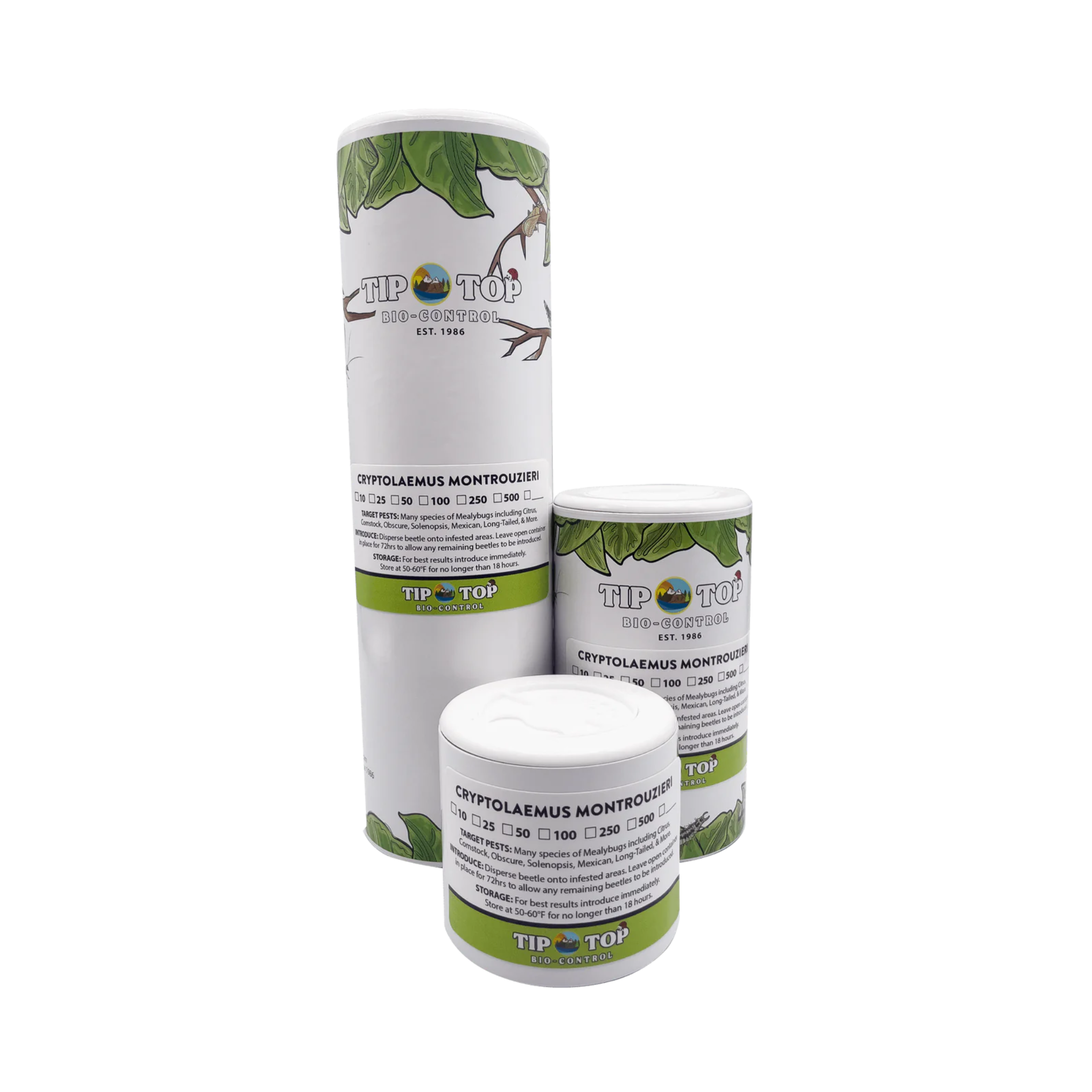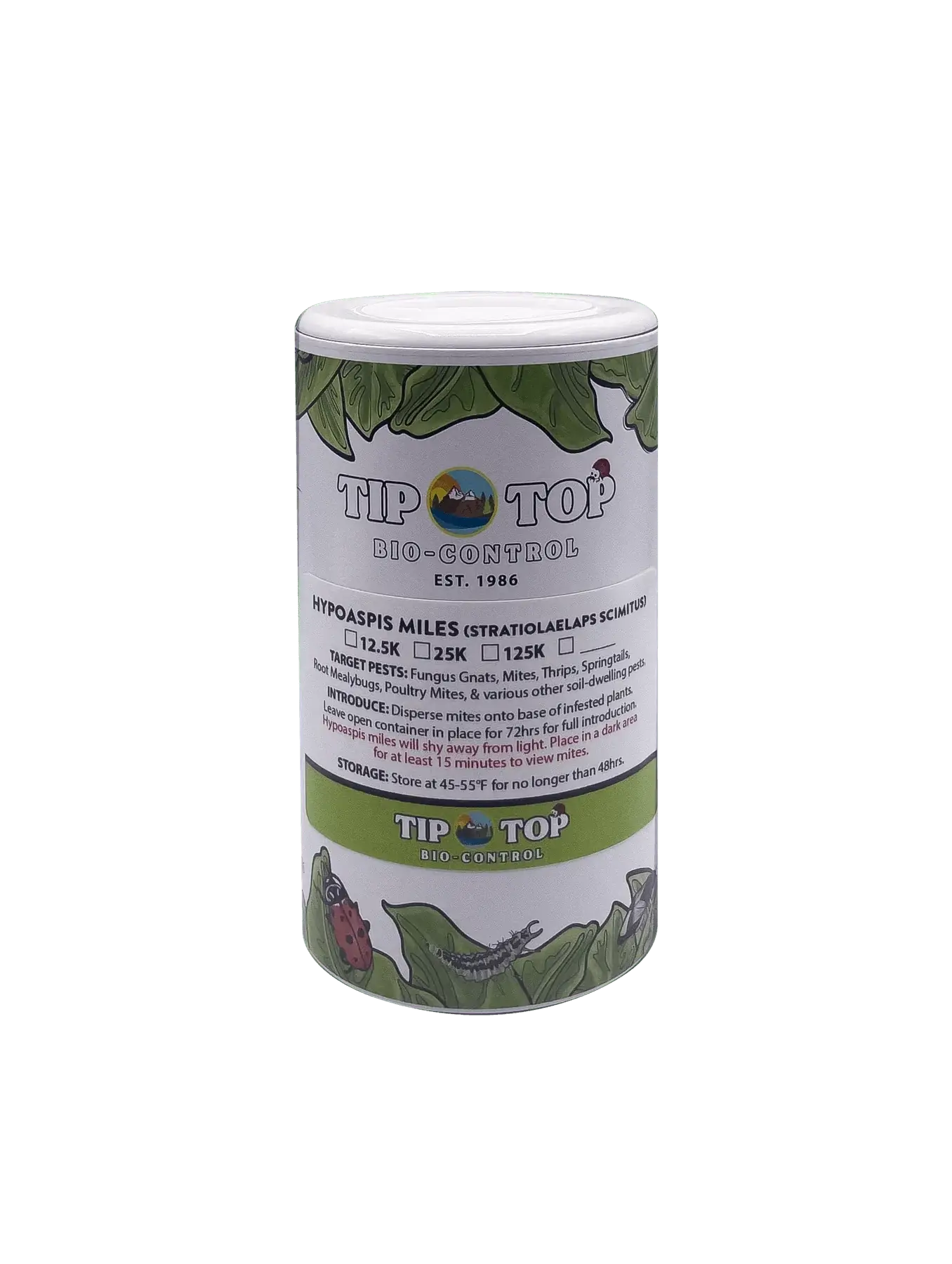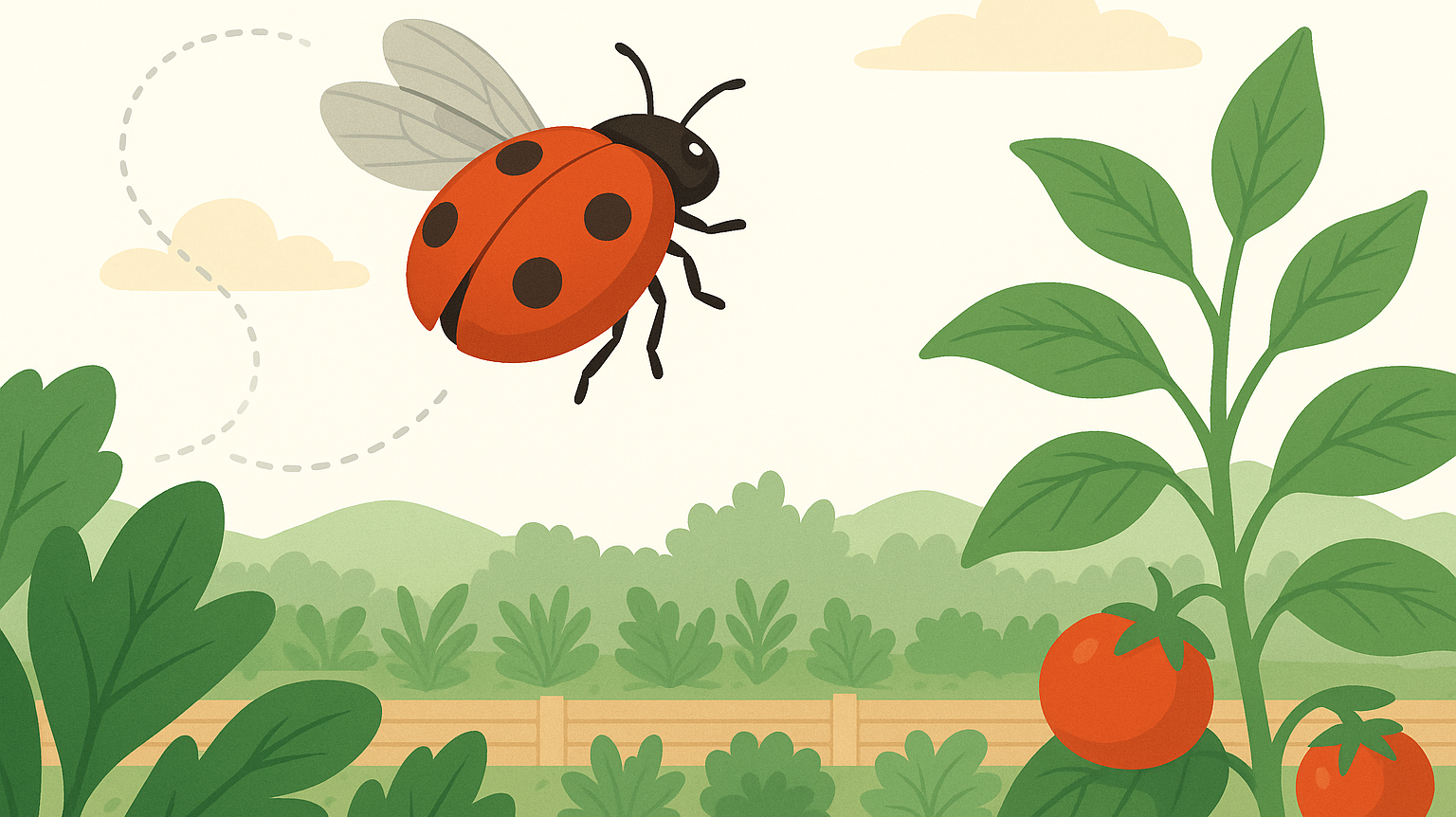Done With Fungus Gnats? Sick of Snake Mites? This Fixes Both.
Sticky traps and surface sprays won’t stop what’s happening under the surface.
Stratiolaelaps scimitus is a soil-dwelling predatory mite that hunts pests where they live—not where you wish they were. It targets the larval stages of fungus gnats, thrips pupae, and root aphids in soil and substrate, and it’s one of the few biological predators proven to work against snake mites in reptile enclosures.
No sprays. No residue. Just microscopic hunters doing their job.
Stratiolaelaps scimitus (Live Bottled Mites)
Biological Control for Fungus Gnats, Snake Mites, and Root-Zone Pests
These fast-moving mites burrow into soil or bedding and track pests at the source. Once they find them, they feed, reproduce, and keep going. All they need is moisture, moderate temperatures, and a reason to stay.
What It Treats Best
| Pest | Stage Targeted | Notes |
|---|---|---|
| Fungus gnats | Larvae in soil | Ideal for grow tents and container plants |
| Snake mites | Adults and eggs in bedding | For reptile enclosures only |
| Thrips | Pupae in substrate | Complements foliar mites like Cucumeris or Swirskii |
| Root aphids | Soil-dwelling forms | Use as part of a multi-layer IPM |
| Soil mites | Opportunistic control | Reduces pest mite populations in living soil |
| Poultry mites | In bedding | Used in some aviary and coop setups |
Why Use This for Fungus Gnats and Snake Mites?
| Feature | What That Means |
|---|---|
| Goes underground | Hunts fungus gnat larvae in soil where sprays can’t reach |
| Tracks in substrate | Moves through bedding to find snake mites in reptile setups |
| Reproduces on-site | Lays eggs, builds population naturally |
| Zero residue | No harm to pets, reptiles, or beneficials |
| Multi-stage suppression | Targets pests at egg, larva, and adult phases |
| Quiet but effective | You won’t see them—but you’ll know they’re working |
Best Used For
-
Houseplant growers dealing with stubborn fungus gnats
-
Reptile keepers trying to treat snake mites naturally
-
Grow tents, greenhouses, raised beds with root-zone pests
-
Organic or no-spray growers using living soil
-
Early-stage pest prevention in propagation zones
How to Apply
| Environment | How to Use |
|---|---|
| Soil/grow media | Sprinkle mites across the top layer after watering |
| Reptile enclosures | Apply directly to bedding (avoid direct contact with snakes) |
| Greenhouses or raised beds | Release evenly across infested zones |
| Coops or aviaries | Dust into dry bedding, away from direct heat or sunlight |
-
Keep substrate moist—not wet—for 2 weeks after application
-
Do not spray pesticides before or after release
-
Repeat as needed in high-pressure zones
How Many to Use
| Pressure | Rate |
|---|---|
| Light or preventative | 10 mites per sq ft |
| Moderate infestations | 20 mites per sq ft |
| Severe or animal bedding use | 30+ mites per sq ft |
Reapply every 2–4 weeks as needed for sustained suppression.
How They Work
-
Female mites lay up to 60 eggs in substrate
-
Eggs hatch in 1–2 days
-
Larvae hunt and feed, becoming adults within a week
-
Adults live 3–6 weeks and continue patrolling
This creates layered, ongoing control as long as conditions remain favorable.
Storage & Shipping
-
Ships with live delivery guarantee
-
Use immediately upon arrival
-
If needed, store at 45–55°F for up to 48 hours
-
Do not freeze or expose to extreme heat
FAQ
How does the Live Guarantee work?
We know how important it is for your mites to arrive healthy and ready to work. That’s why we offer a live arrival guarantee—with flexible options depending on when we hear from you:
- Let us know within 24 hours of delivery: We’ll gladly send a free replacement shipment.
- Let us know within 2–3 days of delivery: We can offer store credit to make things right.
- After 3 days from delivery: Because these are living organisms, we’re not able to offer replacements or credit beyond that window. By then, it’s harder to know what went wrong or whether shipping conditions were a factor.
We truly want your mites to succeed—so please open your package as soon as it arrives and check on them. If something doesn’t look right, don’t wait—reach out and we’ll take care of you.
Where are you located?
We have a number of different locations in NJ, Maine and Oregon. While we'd love to have you, we are not currently open to the public.
Can I call you?
We get it. Sometimes it's easier to talk to someone, and on a case by case basis we can try to figure it out. Unfortunately though, we're really not able to take calls—FGMN is a small nursery, and we're usually elbows-deep in plants or packing boxes. To make sure nothing gets missed (and everyone gets a timely reply), we keep all communication in writing.
Feel free to message us at info@fgmnnursery.com. We mostly respond quickly, but every once in awhile replies may take a day. Do follow-up if you don't hear in that time. We're human, we miss an email here or there.
Too Many Options?
We get it. Try our mite/insect matchmaking quiz and instantly get matched to the solutions you may need.
Our Live Delivery Guarantee
We stand behind every leaf and every mite. If your plant or predatory insects don’t arrive alive on the first delivery attempt, we’ll make it right.
Here’s what you need to know:
- Email us at info@fgmnnursery.com within 24 hours of delivery
- Include clear photos of the item and the shipping label
- Someone must be available to receive the package—plants and bugs don’t do well sitting in the sun, a mailbox, or the back of a delivery truck
For plants, we offer store credit if something goes wrong.
For predatory mites and beneficial insects, you’ll have the choice of a replacement shipment or store credit.
If you contact us after the 24-hour window, we may still be able to help—just know it’s handled case by case.
We pack with care, insulate when needed, and check the weather before shipping. But once it’s in transit, the fastest way to protect your order is to open it right away.
Mite Matters
The Hidden Weather That Shapes Plant and Predator Life
Invisible weather shapes every growing space. Warm air pools under lights, cool air settles near the floor, and in between, tiny predators decide where they’ll thrive. Learn how microclimates influence the balance between plants, pests, and the mites that keep them in check.
If Ladybugs Are Just Going to Fly Away, Why Use Them?
Most ladybugs don’t fly off out of spite — they leave when the environment isn’t right. Learn how temperature, humidity, and shelter affect whether they settle or scatter, and how to create the ideal setup that keeps them working where you need them most.
Where Did My Predatory Mites Go?
Released predatory mites but can’t see them anymore? Don’t panic. Their invisibility is exactly what makes them effective. Learn why they vanish, how they hunt pests out of sight, and why reapplying keeps your plants protected.









